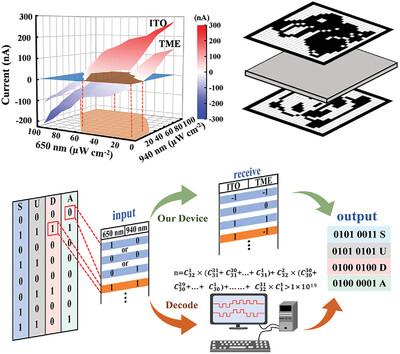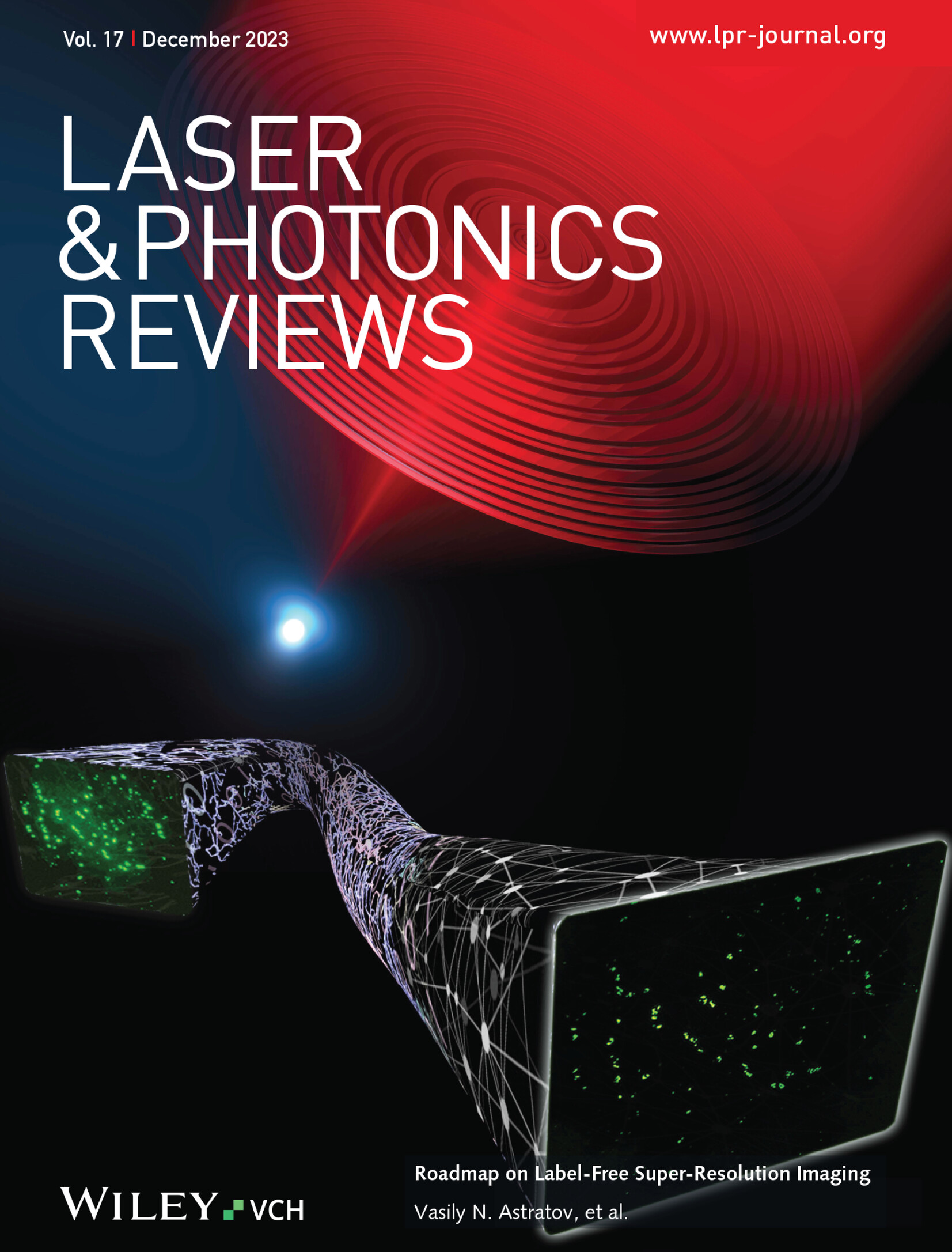Self-Powered Perovskite/Si Bipolar Response Photodetector for Visible and Near-Infrared Dual-Band Imaging and Secure Optical Communication
IF 9.8
1区 物理与天体物理
Q1 OPTICS
引用次数: 0
Abstract
Vertically stacked wavelength modulation bipolar response photodetectors are expected to be applied in various fields because they enable bipolar detection and transmission within one device and do not require harsh operating conditions. However, the as-reported bipolar devices either need to change the detection mode (flipping the device or applying external bias) or have limited application effects. In this study, a self-powered FAPbI3/silicon hybrid visible and near-infrared bipolar response photodetector is reported, and the bipolar response is tuned by controlling the transmittance and interface contact of transparent electrodes. Moreover, unlike for photosensitive layers such as perovskites or organic compounds, the preparation of electrodes does not involve solvents, and array devices with different electrodes can be prepared in microregions without affecting adjacent regions. Then, an encrypted communication system that requires comprehensive consideration of the positive and negative states of different transparent electrode-based devices caused by 650-nm visible and 940-nm near-infrared transmission signals are designed, increasing the difficulty of decryption. A dual-band spectral imaging system that does not require additional voltage driving by combining the reflection of visible light and the penetration ability of near-infrared light is implemented, ensuring miniaturization and high integration of the visual imaging system.

用于可见光和近红外双波段成像及安全光通信的自供电 Perovskite/Si 双极响应光电探测器
垂直堆叠波长调制双极响应光电探测器可在一个器件内实现双极检测和传输,且无需苛刻的工作条件,因此有望应用于各个领域。然而,目前报道的双极器件要么需要改变检测模式(翻转器件或施加外部偏压),要么应用效果有限。本研究报告了一种自供电 FAPbI3/硅混合可见光和近红外双极响应光电探测器,通过控制透明电极的透射率和界面接触来调整双极响应。此外,与过氧化物或有机化合物等光敏层不同,电极的制备不涉及溶剂,可在微区制备具有不同电极的阵列器件,而不会影响相邻区域。然后,设计一种加密通信系统,需要综合考虑 650 纳米可见光和 940 纳米近红外传输信号引起的不同透明电极基器件的正负状态,增加了解密难度。结合可见光的反射和近红外线的穿透能力,实现了无需额外电压驱动的双波段光谱成像系统,确保了视觉成像系统的小型化和高集成度。
本文章由计算机程序翻译,如有差异,请以英文原文为准。
求助全文
约1分钟内获得全文
求助全文
来源期刊
CiteScore
14.20
自引率
5.50%
发文量
314
审稿时长
2 months
期刊介绍:
Laser & Photonics Reviews is a reputable journal that publishes high-quality Reviews, original Research Articles, and Perspectives in the field of photonics and optics. It covers both theoretical and experimental aspects, including recent groundbreaking research, specific advancements, and innovative applications.
As evidence of its impact and recognition, Laser & Photonics Reviews boasts a remarkable 2022 Impact Factor of 11.0, according to the Journal Citation Reports from Clarivate Analytics (2023). Moreover, it holds impressive rankings in the InCites Journal Citation Reports: in 2021, it was ranked 6th out of 101 in the field of Optics, 15th out of 161 in Applied Physics, and 12th out of 69 in Condensed Matter Physics.
The journal uses the ISSN numbers 1863-8880 for print and 1863-8899 for online publications.
文献相关原料
| 公司名称 | 产品信息 | 采购帮参考价格 |
|---|

 求助内容:
求助内容: 应助结果提醒方式:
应助结果提醒方式:


